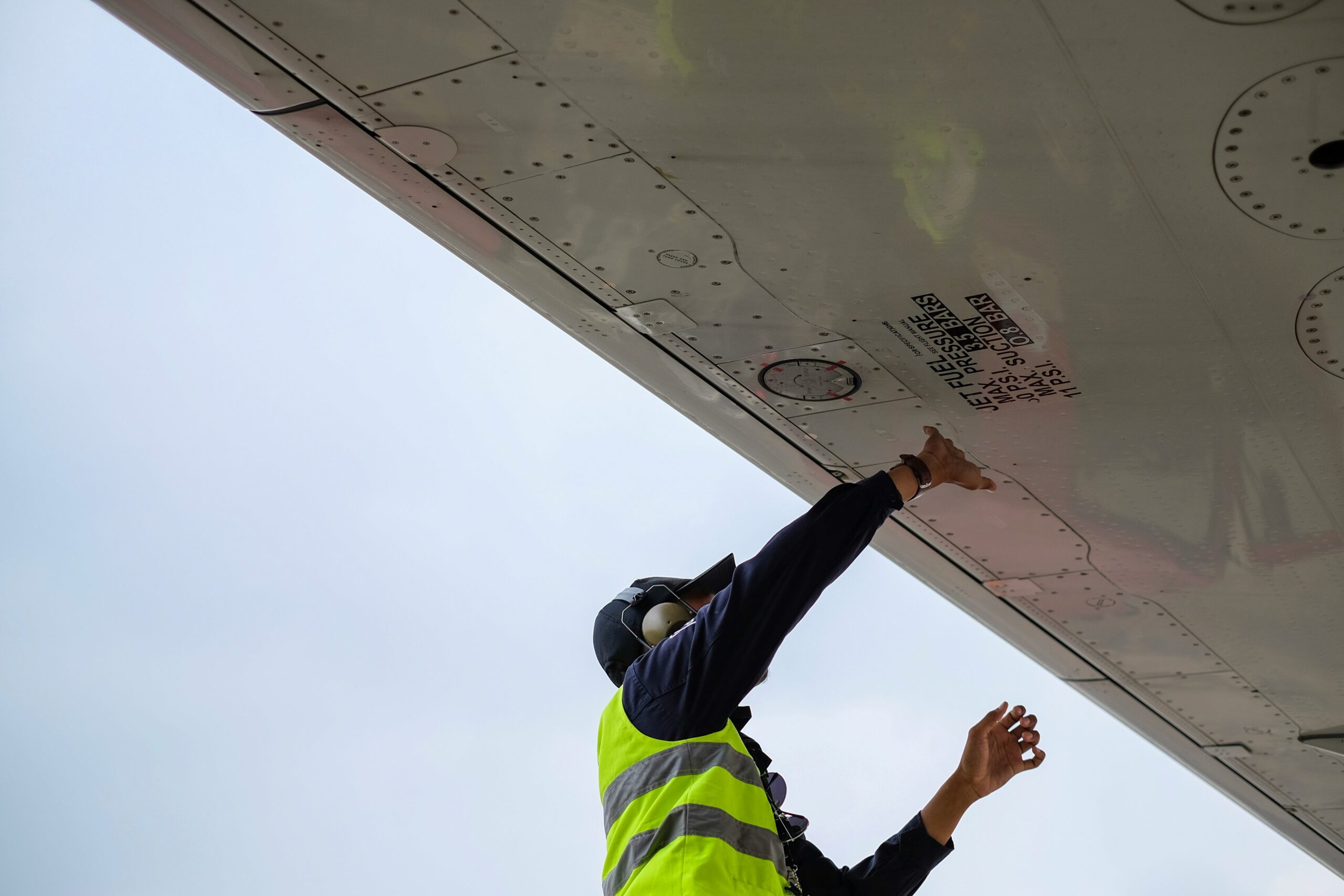The latest annual report from the Pentagon’s Director of Operational Test & Evaluation (DOT&E) states that the F-35 Joint Program Office (JPO) claimed improved reliability by adjusting the way it records equipment failures rather than by delivering technical corrections.
Program analysts reassigned numerous faults to categories that do not influence headline indicators, instructed maintainers to consolidate repeated discrepancies into single entries, and calculated fleet hours for airframes still using older components while excluding those components’ new failures. DOT&E concludes that these procedural choices mask actual operational performance.
One illustrative case concerns nut-plates, the threaded anchors that secure access panels. In mid-2013 the JPO reclassified every nut-plate break from “inherent design” to “induced” damage, implying improper handling by technicians rather than insufficient strength in the hardware. The change immediately raised the Mean Flight Hours Between Failure – Design Controllable (MFHBF_DC) figure without any design improvement on the aircraft.
DOT&E records show a rising count of faults labeled “induced” from September 2012 through April 2014, while faults labeled “inherent” declined despite steady growth in fleet size and flight hours alongside broader concerns over data manipulation. The report highlights three principal procedural changes responsible for the apparent performance gains:
- Reassignment of failure categories. Common faults were moved to classifications that do not feed the primary reliability metrics.
- Partial accounting of component performance. Flight hours for airframes equipped with newly designed parts were included, but failures of the original parts still present on other airframes were omitted.
- Aggregation of repeated maintenance attempts. Multiple repair efforts on a single discrepancy were combined into one event, thereby lowering the overall failure count and compressing recorded maintenance time.
Because production has overlapped development, hardware versions and software builds coexist across the fleet. This concurrency allows selective omission of failures tied to legacy components, artificially lowering fleet-level fault rates while front-line units continue to manage shortages and extended repair times.
Stealth coatings add further complexity. Early low-observable fillers require 48 hours to cure under stable temperature and humidity. A new compound cuts the curing period to 12 hours, yet it must remain below –20 °C until application, creating logistics demands for freezer storage and reliable power that forward operating locations may struggle to meet.
Lockheed Martin rejects accusations of data manipulation and states that revised categories reflect more precise understanding of root causes. The JPO supports this position, arguing that earlier codes overstated design responsibility for damage actually caused by maintenance procedures. Both organizations insist the program remains aligned with the planned reliability growth path. However, DOT&E maintains that the jet still falls short of critical performance expectations.
Several partner nations – including Norway, the Netherlands, Australia, and Italy – have requested unfiltered raw data before authorizing further purchases. Canada suspended its procurement in 2013 primarily over affordability concerns but now cites reliability transparency as an additional factor.
The U.S. Government Accountability Office warns that life-cycle cost projections depend on expected reliability growth. If actual performance lags behind documented figures, long-term sustainment expenditures will increase. Each percentage-point decline in mission-ready rate drives demand for more spare parts, more depot capacity, and higher secondary aircraft usage.
Within the test enterprise, engineers track difficulties associated with overlapping hardware baselines. When an actuator redesign enters the fleet on a limited number of airframes, failures on the original actuator may no longer be counted, yet the flight hours from all aircraft accrue toward the new reliability calculation. When multiplied across dozens of components, the practice significantly distorts the fleet picture.
The Autonomic Logistics Information System (ALIS) – the data backbone for maintenance, supply, and mission planning – receives the same filtered inputs now questioned by DOT&E. The office cautions that inaccurate information within ALIS will misinform future purchase agreements and sustainment budgets.
Initial Operational Capability milestones approach. The U.S. Marine Corps intends to declare IOC for the F-35B with Block 2B software later this year; the U.S. Air Force plans F-35A IOC in 2016 with Block 3I software. Both timelines depend on the very reliability trajectory that DOT&E now disputes, raising the possibility of operational declarations followed by unexpected groundings due to parts shortages or protracted stealth-skin repairs.
Strategically, the United States presents the F-35 as the foundation of allied airpower through mid-century. If the aircraft cannot meet its readiness objectives, partner nations may redirect resources toward upgraded fourth-generation fighters or indigenous fifth-generation designs. Chinese and Russian development programs would gain comparative advantage under such circumstances. This strategic reliance reflects a broader focus on accelerating 5th-generation airpower across NATO and allies.
Congress has responded by directing an independent audit. Legislators require the reliability database to be frozen and publicly released without further mid-cycle edits before authorizing full-rate production funds. Auditors will trace failure coding back to the earliest flights, allowing transparent evaluation of any subsequent recoding. The 2024 report outlines further F-35 challenges in both software integration and logistics.
Aircrews at operational squadrons continue to contend with long cure times for stealth coatings, extensive quick-engine-change procedures, and recurrent software resets. Their daily experience does not match the smooth performance curves presented in recent program briefings. Until the audit concludes, confidence in F-35 readiness relies on metrics that the Pentagon’s own test community regards as inconsistent.
WHAT’S NEW – March 2025
A decade of service has brought genuine progress in sortie generation, yet the bookkeeping debate remains unresolved. DOT&E’s 2024 report acknowledges improved sortie rates but repeats an earlier caution: evolving data definitions obscure the true mission-capable figure. Technology Refresh 3 (TR-3) software, central to the Block 4 upgrade, arrived two years late and introduced new fault codes that do not align with earlier builds, complicating trend analysis.
The production tally exceeds 1,340 aircraft, but approximately 260 airframes carry Category 1A restrictions that limit them to local training. Most await TR-3 hardware modifications or software rectification. Program managers concede that early acceptance of partially configured aircraft added flight hours that never reflected full reliability exposure, a concern first raised in 2015.
GAO’s recent audit attributes a $16 billion increase in projected sustainment cost to reliability shortfalls that earlier reporting practices concealed. Components redesignated as “upgraded” continued to fail, yet their flight hours bolstered the overall improvement curve. Maintainers documented recurring work, but the data system merged successive repairs into single incidents.
Flight testers now operate on six-week “Discovery Build” software cycles intended to correct anomalies quickly. The accelerated rhythm supports timely fixes but disrupts metric stability because each software drop resets counters. DOT&E advocates set test intervals without new code to permit controlled assessments, whereas the JPO maintains that continuous integration saves calendar time.
International partners have adopted differing postures. Australia has paused acceptance of its thirty-third F-35A until TR-3 stabilizes; Norway and Denmark have taken similar positions. Italy continues to accept aircraft from the Cameri line to sustain industrial work, then stores them pending retrofit. This mosaic of approaches complicates NATO readiness planning because each fleet shows a distinct availability pattern.
Pratt & Whitney’s Engine Core Upgrade (ECU) for the F135 is scheduled to enter flight test next year. DOT&E urges the JPO to maintain separate reliability records for ECU-equipped engines from the outset to avoid repetition of earlier data-aggregation issues.
Congress now requires the Cost Assessment and Program Evaluation office to audit all flight-test data beginning with 2012 entries. The mandate freezes the current data schema through March 2026 and prohibits additional category shifts without formal notification to lawmakers.
Operational impact is already visible. Pacific Air Forces cancelled a planned Guam F-35A detachment this winter when a TR-3 software regression generated a surge in false fault codes and lowered spare-part availability below 65 percent. Maintainers recorded the events, but ALIS consolidated multiple “cannot duplicate” write-ups into single items, reducing the apparent fault count while the aircraft remained out of service.
Lockheed Martin cites upcoming predictive-maintenance modules and enhanced depot capacity as corrective measures, scheduled for 2027. Observers recall similar assurances given in 2015 and note that the principal difference now is heightened transparency: external analysts can inspect real-time fleet dashboards and identify irregularities almost immediately.
The integrity of performance data now influences budgets, export discussions, and alliance cohesion as directly as the aircraft’s radar cross-section or sensor fusion. DOT&E’s 2015 warning retains full relevance. Ten years later, the F-35 enterprise continues to learn that reliable metrics are essential to program credibility.Click here for the F-35 section of the OT&E; report (34 PDF pages).
REFERENCE SOURCES
- https://www.airandspaceforces.com/f-35-tr-3-software-patches/
- https://www.dote.osd.mil/Portals/97/pub/reports/FY2015/dod/2015f35jsf.pdf
- https://www.dote.osd.mil/Portals/97/pub/reports/FY2024/other/2024Annual-Report.pdf
- https://www.gao.gov/assets/gao-24-106909.pdf
- https://www.airandspaceforces.com/new-pentagon-report-f-35-test-progress-readiness
- https://www.defenseone.com/technology/2025/02/f-35-programs-software-development-isnt-getting-any-better-pentagon-report-finds/402725
- https://dsm.forecastinternational.com/2025/05/09/lockheed-martin-on-pace-for-record-f-35-deliveries-in-2025
- https://www.pogo.org/analysis/f-35-testing-report-reveals-problems-with-production-decisions
- https://www.flightglobal.com/pentagons-top-weapons-tester-doubts-f-35a-capabilities/121556
- https://www.esd.whs.mil/Portals/54/Documents/FOID/Reading%20Room/Selected_Acquisition_Reports/FY_2023_SARS/F-35%20MSAR%20Dec%202023.pdf
- https://bestfighter4canada.blogspot.com/2015/01/2015-f-35-dot-report-more-of-same-with.html



